Contents
Cherry is one of the most popular fruit crops. To obtain berries in a warm and hot climate, two types are most often grown – ordinary and sweet cherries. Entire scientific teams are engaged in breeding new varieties, however, successful cultivars appear infrequently. Even less often, noteworthy dukes are created – hybrids of cherries and sweet cherries.
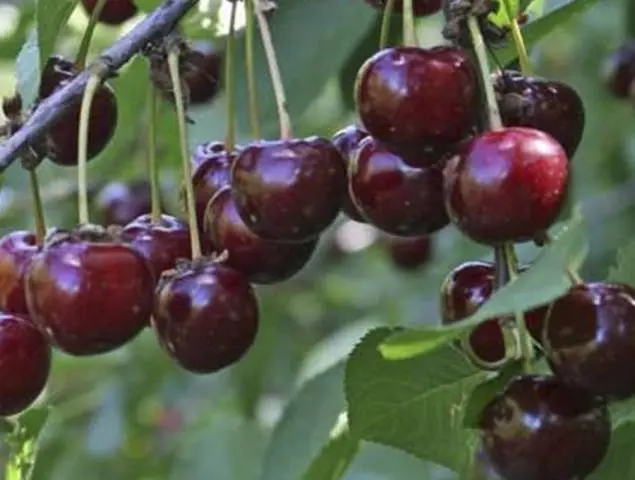
History of breeding
Garland cherry is a typical Duke. It was created by A. Ya. Voronchikhina, an employee of the Rossosh Experimental Horticulture Station. The parent cultures were Krasa Severa and Zhukovskaya. Both varieties are old dukes. Beauty of the North is the first cherry-cherry hybrid, bred back in 1888 by Ivan Michurin. Zhukovskaya is a frost-resistant duke created in 1947.
Since 2000, the Garland variety has been recommended for cultivation in the North Caucasus region.
Description of the culture
Cherry Garland forms a low tree, not exceeding four meters in size. The rounded, not too dense crown consists of branches extending from the trunk at almost a right angle. Young shoots are even, reddish-brown, with long internodes. With age, the bark first becomes grayish brown, then grey-black.
The leaves are large, smooth, concave. They have an almost round, often asymmetrical shape. The top of the leaf blade is sharply pointed, the base is either wedge-shaped or rounded. Midrib and long petiole anthocyanin coloration, no stipules.
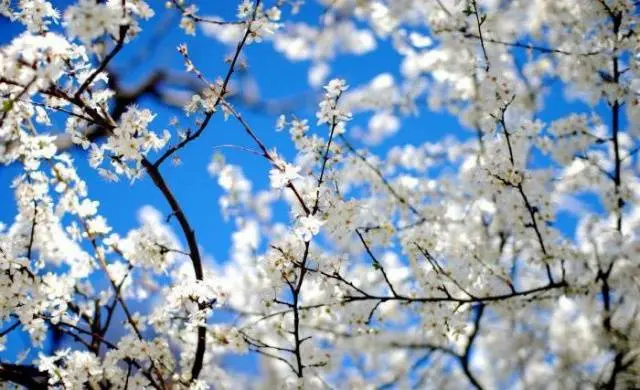
Large white flowers on long stems are collected in 3-5, less often – 1-2 pieces. In diameter, they reach 3,5-4 cm. Garland fruits are large, weighing about 6 g, with a diameter of up to 2,5 cm. The shape of the berry can resemble a heart or a ball tapering to the top with clear edges and a small funnel. The skin of the fruit is dark red, the flesh is bright, with light streaks, the juice is pink.
The berry is tender, juicy, with a sweet and sour pleasant taste, rated 4,2 points. The stone is large, oval, well separated from the pulp.
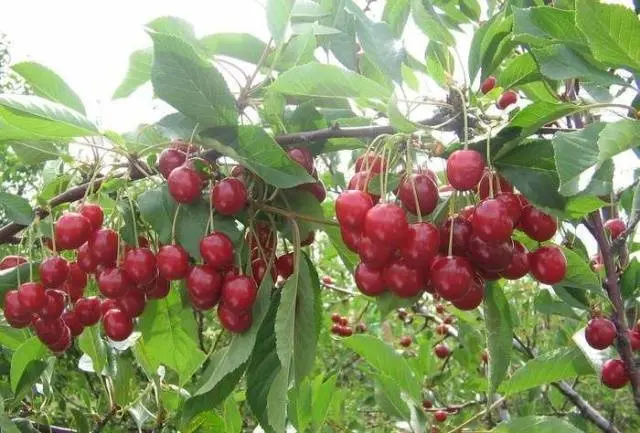
Garland cherry variety is recommended to be grown in the North Caucasus region. At the moment, its distribution is small – the south of Voronezh and the north of the Rostov region.
Features
Cherry Garland has great potential. Perhaps over time it will become more popular and the area of its cultivation will increase.
Drought resistance, winter resistance
The drought resistance of the Garland variety is average, the frost resistance of wood is high. In the south, it can withstand even harsh winters well. The flower buds are well tolerated by the frosts common in the zone recommended for growing the variety. Some of them will die if the temperature drops below -30⁰ C.
Pollination, flowering period and ripening period
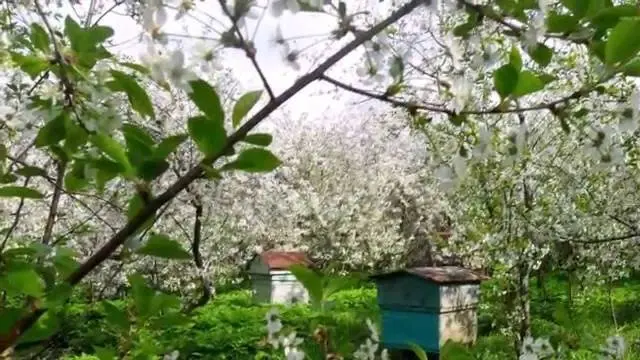
Cherry variety Garland is self-fertile. Some sources even claim that it does not need pollinators at all. Perhaps they think so because in the southern regions, cherries and sweet cherries grow everywhere, and there are a lot of them. Often the culture is planted even along the roads, as protection from dust. Berries are not harvested from such trees, but they bloom and produce pollen.
Flowering and fruiting occur in mid-early terms. In the south, berries appear at the end of June.
yield, fruiting
The cherry Garland, which was grafted on antipka, begins to bear fruit after planting for 3-4 years. A young tree produces about 8 kg of berries, then this figure rises to 25 kg. In a particularly good year, up to 60 kg of fruit can be harvested from an adult Garland cherry. It is thanks to the many berries that decorate a small tree in the middle of summer that the variety got its name. In the photo of the Garland cherry, this is clearly visible.
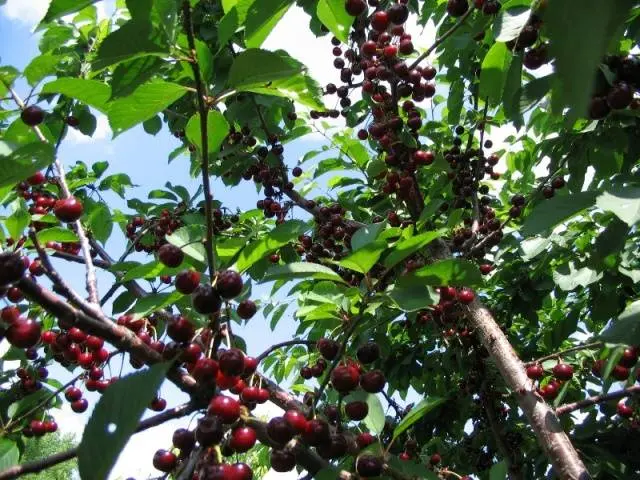
Berries when fully ripe come off cleanly, unripe – with pieces of pulp. Fruit transportability is low due to too tender pulp.
Scope of berries
Cherry berries Garland have a universal purpose. They can be eaten fresh, canned, made into jam. The fruits are suitable for making juices and wine – they contain enough acid and sugar.
Disease and pest resistance
Cherry Garland can be affected by typical crop pests. Its resistance to coccomycosis is average, but to monilial burns it is high.
Advantages and disadvantages
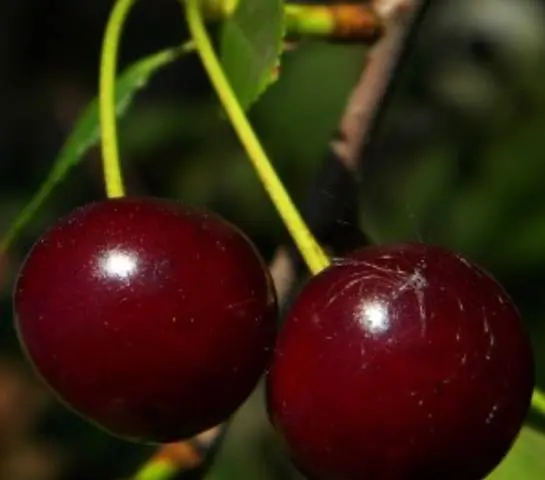
The characteristics of Garland cherries allow us to assert that its numerous advantages outweigh the disadvantages. Benefits include:
- High yield.
- Large berries.
- High resistance of wood to freezing.
- The berry is firmly attached to the stem.
- High resistance to moniliosis.
- The Garland cherry tree is compact, making it easy to harvest.
- Universal fruits.
- High self-fertility of the variety.
Among the shortcomings should be mentioned:
- Insufficient frost resistance of flower buds.
- Low transportability of berries.
- Medium resistance to coccomycosis.
- Big bone.
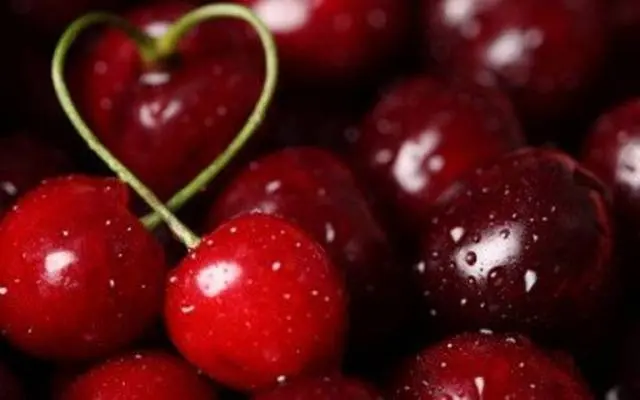
Features of landing
The garland is planted in the same way as other varieties belonging to the Common Cherry species.
Recommended dates
In the south of the North Caucasus region, the Garland cherry is planted in the fall, after leaf fall, in the north – in the spring, before bud break. A pit for culture must be prepared in advance.
Choosing the right place
For Garland cherries, a well-lit place is suitable. It should be flat or located on a gentle slope of a hill. If cold winds prevail in the planting area, the tree must be protected by a fence, buildings or other crops.
The soil needs a neutral, rich in organic matter, loose.
What crops can and cannot be planted next to cherries
Next to the Garland variety, you can plant other cherries, sweet cherries or any stone fruit crops. Do not place birch, maple, walnut, oak, elm nearby. Sea buckthorn and raspberries should be planted away – their root system will grow in width very quickly, give abundant growth and will oppress the cherry.
After the Garland is well rooted, ground cover plants can be planted under it.
Selection and preparation of planting material
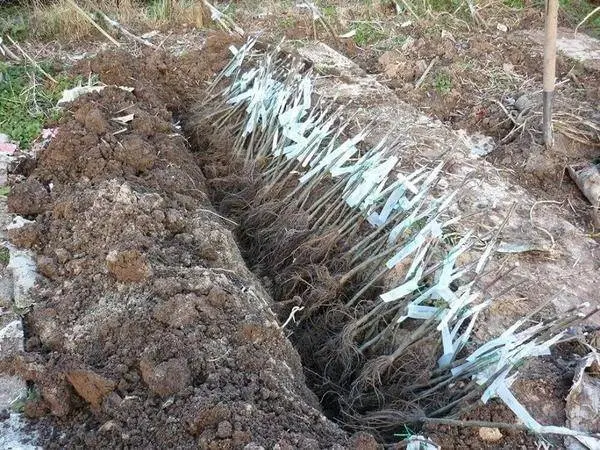
Seedlings take root well at the age of 1-2 years. Their root should be well developed, not damaged. The color of the bark of a young Garland cherry is reddish-brown. The stem must be straight, without damage and cracks, with a height of:
- one-year-old seedling – 80-90 cm;
- two-year-old – no more than 110 cm.
Preplant preparation of cherries consists in soaking the root. If it was wrapped in film or smeared with clay mash – at least three hours. An unprotected root is dipped in water for no less than a day.
Landing algorithm
The hole dug in advance should have a diameter of about 80 cm and a depth of at least 40 cm. When planting in autumn, it must be filled with water before planting cherries. A fertile mixture is prepared from the top layer of the earth obtained by digging a hole, a bucket of humus, phosphorus and potash fertilizers, taken in 50 g each. If the soil is acidic, lime or dolomite flour is added. 0,5-1 bucket of sand is poured into dense soil.
Landing is carried out in the following sequence:
- At a distance of 20 cm from the center of the pit, a support is driven in.
- A cherry seedling is set in the middle and covered with a fertile mixture. The root neck should rise by 5-8 cm.
- The soil is compacted, watered with 2-3 buckets of water.
- Along the perimeter of the landing pit, a hill is formed from the ground to retain moisture.
- Cherries are tied to a support.
- The soil is mulched with humus.
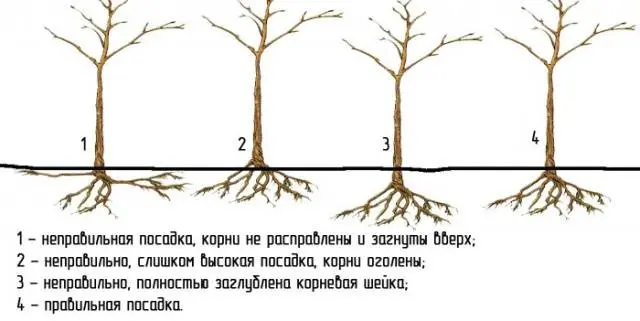
Culture aftercare
After planting the cherry garland, the seedling is plentifully and often watered. An adult plant needs it only in dry summers. In the autumn they carry out moisture charging.
The first years, the soil under the cherry is regularly loosened. When the Garland begins to bear fruit, ground covers can be planted under it.
The best top dressing is the autumn introduction of a bucket of humus and a liter jar of ash into the trunk circle. It contains all the elements necessary for the cherry. Mineral fertilizers are applied as follows:
- nitrogen – in the spring;
- potassium and phosphorus – in the fall.
In the regions recommended for cultivation, the Garland variety does not need shelter for the winter. But it needs to be cut off regularly – to form before the start of sap flow, sanitation is carried out as necessary.
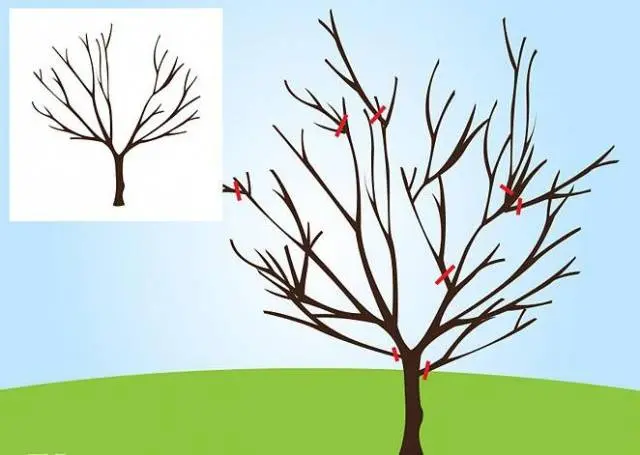
The bole is protected from hares with burlap, straw or the installation of a special metal mesh.
Diseases and pests, methods of control and prevention
Garland cherries are moderately susceptible to pest damage. To avoid trouble, you need to find out which insects infect the crop in your area and carry out preventive spraying with the appropriate insecticides.
Garland almost does not get sick with moniliosis, it will be enough to carry out preventive treatments: in spring, on a green cone – with copper-containing preparations, in autumn, after leaf fall:
- in the south – preparations containing copper;
- in the northern regions – iron sulfate.
In places where autumn is long and warm, the third treatment is carried out before the onset of frost – with iron sulfate.
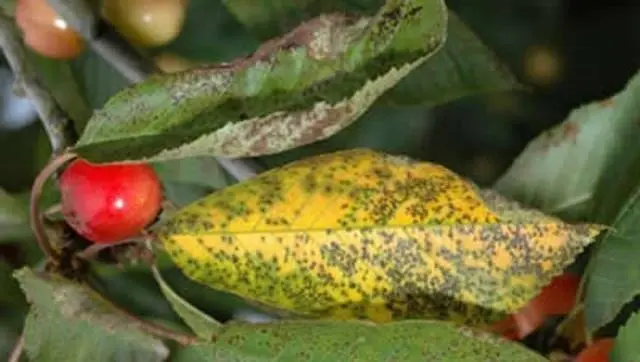
Conclusion
Cherry Garland – not yet appreciated variety. High self-fertility, excellent yield, compact size and versatile berries with a pleasant taste will eventually make it more in demand.









